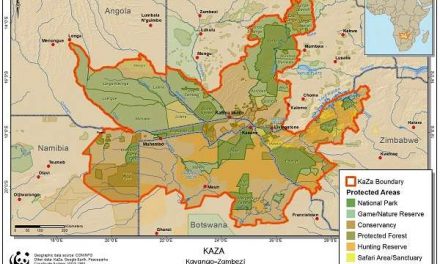
When the partner slows you down, it is time to reconsider the relationship
25 years after overthrowing political domination of Namibia by South Africa, it is time for us to revisit our economic agenda and determine exactly how dependent we still are on Africa’s economic giant.
The issue of drafting an own and indigenous economic agenda becomes even more pertinent when one considers the direction the South African economy has taken since the international financial crisis.
Elsewhere in this edition is an article by Dani Rodrik, Professor of Social Science at the Institute for Advanced Study at Princeton University. Professor Rodrick discusses the potentially disruptive nature of capital inflows and outflows in frontier markets where capital controls are absent or limited, or not able to deal with the massive capital flows of an integrated global financial system. Both we and South Africa are just such markets.
We as the junior partner in the Common Monetary Area arrangement are only too painfully aware of the disruptive effect of capital flows as witnessed by the damage it does to the external value of the South African Rand. On top of that, given South Africa’s gross mismanagement of its own economy, Namibian policymakers, in my view, should start considering alternative channels to international capital.
This is easier said than done. For starters, our economy is only about 3.5% to 4% of the giant South African economy so our bargaining power is indeed extremely limited. Secondly, we have been part of the South African administrative sphere from 1915 to 1990. During this time, the local economy was only an extension of the stronger one. A very large number of our institutions and our local companies function within the constraints posed by South African dominance, both in terms of statutory processes and shareholding.
Furthermore, capital controls were punted for the past two decades as contrary to liberalised economic growth. If you want to grow your local financial markets, you have to let go of all capital controls eventually, we were told. This became the mantra from the developed world, especially from its financing institutions. It was not until last year that a significant proponent against this view came to the fore, in the person of the new Indian finance minister. Many analysts have pointed out in the past that capital flows can be highly disruptive to smaller economies but this view was seen as only of academic importance. When the Indian finance minister took up the crusade, the rest of the world had to pay attention. The capital controls debate then assumed some political significance and this is what we want.
Another expert on the disruptive nature of capital flows is none other than one of the board members of the Federal Reserve, Stanley Fisher. As an economist at the IMF, he observed first-hand over many years, what devastation uncontrolled capital outflows can cause in economies with limited liquidity. The currency crises of the Asian Tigers, Argentina, Russia, and later Mexico, are all contributed to unprecedented capital flows over which financial authorities in those countries had absolutely zero control. It always confounds me why the Rand and by implication, the Namibia Dollar can go for such a nosedive when capital flees the Johannesburg Securities Exchange. One would expect that the currency will appreciate to its former level once capital flows return but this is never the case. It does not confound me though, from an economic perspective. I know that positive net capital inflow is required to finance the deficit on the South African balance of payments, and that this deficit erodes local liquidity but what I find hard to understand is that, despite improved exports (due to the weaker currency), capital inflows never manage to take the Rand back to a level where the balance of payments will be neutral.
In my view, the Rand is undervalued by some 30%. Not many analysts will agree with this assessment, and I have to admit, it is difficult to defend against the background of a sea of negative statistics. But I generally use Purchase Power Parity as a benchmark, and this shows to me broadly, that the Rand is much weaker than what its fundamental value dictates.
I do not propose we sever the umbilical link to the Rand, I am only asking that we establish and nurture secondary channels to other currencies and that includes markets trading in Yuan. This way, we can set up an alternative route to gain access to foreign funds, and to reduce our dependence on South Africa. Perhaps we must consider letters of credit that will link us directly to the Yuan, circumventing the need to do transactions in Euro or US Dollar or even in Rand.










































